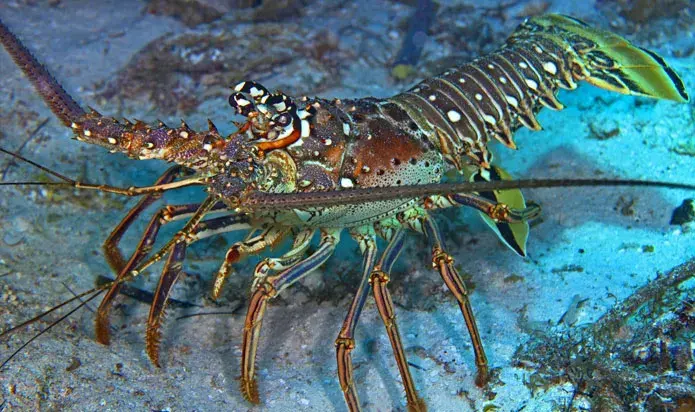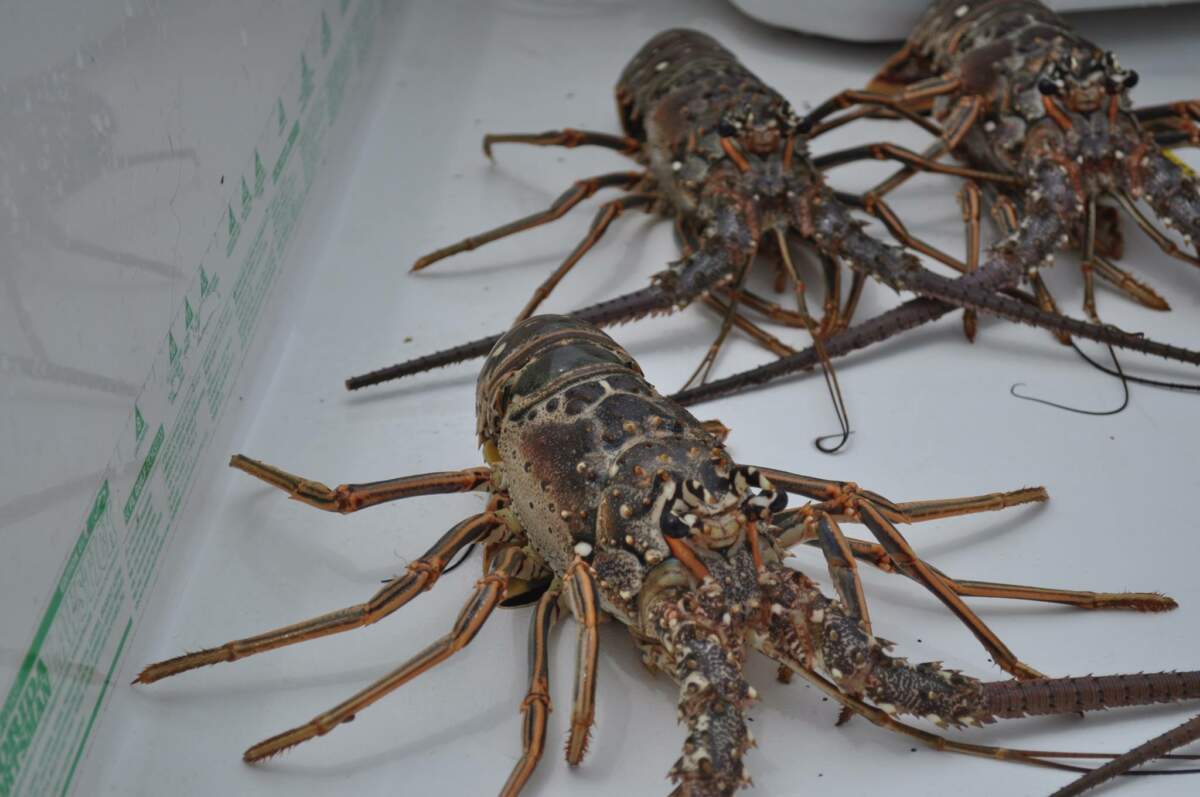
07 Feb 2024 Attractions Emma Adamson
At this particular period sea-diving (scuba-diving and snorkeling) enthusiasts are allowed to harvest spiny lobsters in the waters of the Florida Keys. This season is regulated by the Florida Fish and Wildlife Conservation Commission (FWC) to ensure sustainable and responsible harvesting practices.
Divers must ensure to comply with the rules and regulations of the season and be sure to stay updated with the most recent news. They must also be sure to get information on the dos and don’ts of lobstering such as, what gear to take along, what lobster size can be harvested, bag limits, etc.
The lobster season Florida Keys takes place twice a year. Once in July and the other 8-month long one in August.

The mini-lobster season takes place on the last Wednesday and Thursday of July every year. Mini-lobster season is great for fishermen to give a head-start to the lobster season in Florida Keys.
Think of July in the Florida Keys as the lobsters' exclusive pre-season. The mini-lobster season is a two-day, fun-filled extravaganza before the official lobster season starts. Since 1987, the event has given scuba and free divers a sort of "head start", sports fishermen get their hands on harvesting lobsters before the bigger commercial boats, a bit like a VIP pass to the underwater festivities, making it a great start off!
Here's how it works: you have two days, with a limit of 12 lobsters daily statewide (except in Monroe County where it’s only six). But hold on, there are rules - each lobster's shell (also known as a carapace) must be at least 3 inches, they can't be carrying eggs, and absolutely no spearing is allowed.
To see whether the lobster is checks the boxes to harvest, use a measuring gauge to find out. Just place it on the carapace, right between the eyes, and slide it back until it stops - that's the spot to measure. If a lobster is less than 3 inches, you've got to let it go.
How to find out the gender of our lobster? Male lobsters have a single lobe on their pleopods, something like feathers, while females have two. The second one appears similar to tiny pincers. Here's a fun fact: You can harvest both males and females, as long as females aren't carrying eggs.
Also, before starting your lobster-harvesting journey, ensure you hold a legal saltwater fishing license showing a lobster stamp. It is strongly advised to stay within the law, as the Florida's Fish and Wildlife Conservation Commission (FWC) keep a close watch over both the Mini-Lobster Season and the regular season.
_1707312928.webp)
Let’s get to know about the Florida Spiny Lobster season Florida Keys, shall we? The spiny lobster also known as "bugs" by the experts! They're basically aquatic investigators – no claws, but long antennae for avoiding conflict and aiding in navigation.
Spiny lobsters are different from common lobsters. They have long, pointed antennae, and lack claws on their first four pairs of legs. Females have a tiny claw on their fifth pair. Regular lobsters, in contrast, have shorter antennae and have claws on the first three pairs of legs. The first pair is usually the largest. It's a comparison: long-pointed antennae versus shorter ones, no claws versus having them!
During the day, these bugs/spiny lobsters relax in coral reefs, using the crevices for safety. When night comes, their dinner includes snails, clams, crabs, and urchins. They head back to their hideaways before the break of dawn. It's their routine seafood feast!
Catching these lobsters takes some skills and knowledge! All you need are a tickle stick, a net, and a measuring tool. Understanding how these lobsters move is important – they crawl forward slowly but zoom backward super-fast when they get startled.
The specific dates of this season may vary, however, the spiny lobster season in Florida Keys starts from August 6th and ends on March 31st.
The spiny lobsters are the rockstars of Florida's fishing world, making up an enormous 98% of all lobster action in the U.S. Back in the 1800s, they started as the fun, being used as bait for local fish parties. Fast forward to 1908, and they were pulling in 53,000 pounds of lobster fun, making $3,600 – not too shabby, I agree! But the real lobster fiesta happened during the '40s throughout the '70s.
In 1972, it was like the lobster season Florida Keys Olympics – they were able to harvest around 11.4 million pounds, turning the ocean into their dance floor. The money came through, hitting $13.4 million in 1974 – and quite literally, there were lobster high-fives all around!
Despite a bit of a slowdown in the '70s, lobsters kept things lively in Florida. They didn't just swim, they changed the game for culture, society, and the economy in south Florida, becoming the second-biggest fishing sensation after shrimp.
Getting to enjoy the annual lobster season in Florida Keys is an experience that divers cherish, nevertheless, the fun comes along with certain rules and regulations that must be followed while lobster harvesting in order to ensure that the lobster population remains sustainable and also for the prevention of overfishing.
Here are some of the Florida Keys lobster season rules and regulations that are to be followed by everyone:
Please note: The season dates, size and catch limits can be changed from season to season, as well as, area to area.
For the most recent updates and news, please visit Florida Fish and Wildlife Conservation Commission (FWC)’s official website.
_1707313079.webp)
Lobstering is a skill. And said skill requires particular equipment that helps enhance your lobstering journey! (Also, because it is necessary!) Here is the equipment you need for the Florida Keys lobster season:
| Required Gear | Optional Gear |
| Mask | Gloves |
| Fins | Catch Bag |
| Snorkel | Snare |
| Weights | Dive Socks/Boots |
| Lobster Gauge | |
| Dive Computer | |
| Compass | |
| Octo | |
| BCD | |
| Regulator | |
| Depth Gauge | |
| Pressure Gauge | |
Calling all new lobster hunters! If you're gearing up for your first Florida Keys lobster season adventure, we've got some tips to make sure you reel in those lobster treasures like a pro and cherish those adventurous memories for a long time to come. Get ready for an exciting dive with these handy pointers:
The Florida Keys are renowned for their spectacular lobster season. Several festivals and events celebrate this exciting time of the year. Here are a few awesome ones for your reference:
Taking you deeper into the Florida Keys Lobster Season, here is some additional information that can enhance your overall experience during this fun time:
Lobster diving in the Florida Keys has a rich history, dating back to the primary days of commercial fishing. In the 1800s, lobstering was primarily done using the basic snorkelling equipment such as the hand-held nets. As the enthusiasm grew overtime, so did their techniques. Today, lobster diving is a continued tradition and is cherished by many people. Seasoned hunters pass down their knowledge and tips and tricks to the newer generation.
There are several challenges that come along with this long, beloved tradition. Overfishing, habitat degradation, pollution, and climate change, all have their share of risks to the lobster population. Along with this, the demand for lobsters is increasing especially from the commercial sectors that pose a high risk to the lobster population, as well. Industries must consider more sustainable methods so as to not risk the long-term health of the lobsters.
Rules such as size and bag limits, seasonal closures help protect breeding adult lobsters and ensure sustainability. Additionally, initiatives focused on habitat restoration, marine protected areas, and reducing pollution contribute to the overall health of the lobster habitats and ecosystems.
Experienced lobster hunters in the Florida Keys have countless stories and anecdotes to share about their amazing experiences being on the water. From close encounters with the marine life to memorable catches, each dive is filled with beautiful and unique memories that are shared further with people to further witness.